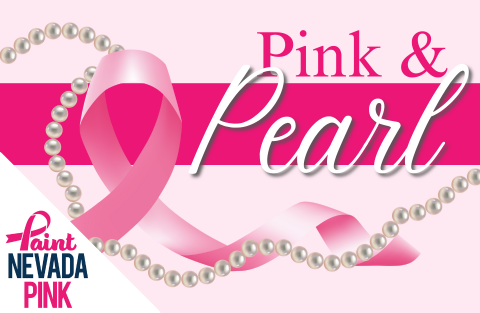How Pairing Mammograms with Lung Cancer Screening Could Save More Women’s Lives
08 August, 2025
When you think about cancer screening for women, mammograms likely come to mind first. After all, breast cancer awareness campaigns and regular mammography appointments are a familiar part of many women’s healthcare routines. But there’s another, even deadlier threat: lung cancer. Despite being the leading cause of cancer death among women in the United States, lung cancer often goes undetected until it’s too late—largely because so few eligible women are screened for it.
A recent study set out to tackle this problem by asking a simple question: What if we could use the widespread acceptance of mammograms as a “teachable moment” to encourage more women to get screened for lung cancer, too?
The Challenge: Low Rates of Lung Cancer Screening
The statistics are sobering. While about 72% of eligible women get regular mammograms, only 4–6% of those at risk for lung cancer receive the recommended annual low-dose CT scan (LDCT) that could catch the disease early, when it’s most treatable. Early detection makes a world of difference: the five-year survival rate for localized lung cancer is as high as 63%, but drops to less than 8% once the cancer has spread.
So why aren’t more women getting screened for lung cancer? The research team at Stanford University and Mt. Auburn Hospital suspected that lack of awareness and logistical hurdles might be to blame. They decided to see if pairing lung cancer screening with routine mammograms could make a difference.
The researchers invited women who were already coming in for mammograms to participate in a pilot program. They focused on women who were considered “dual-eligible”—those who qualified for both breast cancer and lung cancer screening based on age and smoking history.
Before the screenings, participants filled out surveys about their knowledge and attitudes toward lung cancer screening. Many were surprised to learn they were even eligible. Only about 42% knew that lung cancer screening is recommended for people who smoke and hare considered high-risk, even though nearly all of them—98%—recognized they were at risk for lung cancer. Most women said they were motivated by the hope of catching cancer early, and a large majority—87%—expressed interest in getting both screenings on the same day.

Sunrise Hospital adopted the Pink & Pearl campaign during Breast Cancer Awareness Month and focused on creating activities to promote the screenings for breast and lung cancers together, such as at health fairs with employer groups. Education tables were set up in the hospital lobby to promote breast and lung cancer awareness. At these health fairs, individuals could check their eligibility for a mammogram and be booked for an appointment on-site. Read more about Pink & Pearl in our NCC Success Story.
But there were barriers, too. More than half of the women didn’t know the criteria for lung cancer screening, and nearly half worried about the cost, even though the screening is typically covered for eligible patients. Some also had questions about the logistics, such as where the scan would take place or how long it would take.
After meeting with healthcare providers for a shared decision-making visit—where they learned about the risks and benefits of lung cancer screening—most participants decided to go ahead with the LDCT scan. The experience was overwhelmingly positive. Afterward, 84% said they would be likely to do dual screening again, and 93% found the educational visit helpful or very helpful. Many said it felt like a true partnership with their provider, allowing them to make an informed choice about their health.
The study also showed that rolling out dual screening is practical for healthcare systems. The process was successfully implemented at two large academic centers, and most women who were eligible chose to participate.
This study shines a light on a group of women who are at high risk for lung cancer but often fall through the cracks of the healthcare system. Many had been eligible for lung cancer screening for years—on average, more than a decade—yet had never been screened. The main reason? They simply didn’t know they should be.
By pairing lung cancer screening with mammograms, clinics can reach women at a moment when they’re already thinking about their health. The results suggest that this “teachable moment” can be a powerful tool for increasing awareness and uptake of life-saving lung cancer screening.
Looking Ahead
Of course, this was a small pilot study, and there are challenges to scaling up the approach nationwide. But the findings are promising. They show that women are open to the idea of dual screening, especially when they understand the benefits and have their questions answered. The next steps will involve finding ways to automate the process of identifying eligible patients and making sure both patients and providers are educated about lung cancer screening guidelines.
In the end, combining mammograms with lung cancer screening could help catch more cancers early and save more lives. Sometimes, all it takes is meeting women where they already are—and giving them the knowledge and opportunity to protect their health in more ways than one.
This article was created with the assistance of AI and fact-checked and edited by a human.
You May Also Like

Harnessing AI to catch lung cancer earlier
12.23.2025
Lung cancer remains the leading cause of cancer deaths, in part because early-stage disease is often missed until symptoms appear.

NCC brings breast health education to Pink Ribbon Night at Reno Public Market
11.24.2025
Pink Ribbon Night at Reno Public Market was already shaping up to be an evening of music, community and support for breast cancer awareness.

NCC brings breast health education to Pink Ribbon Night at Reno Public Market
11.24.2025
Pink Ribbon Night at Reno Public Market was already shaping up to be an evening of music, community and support for breast cancer awareness.